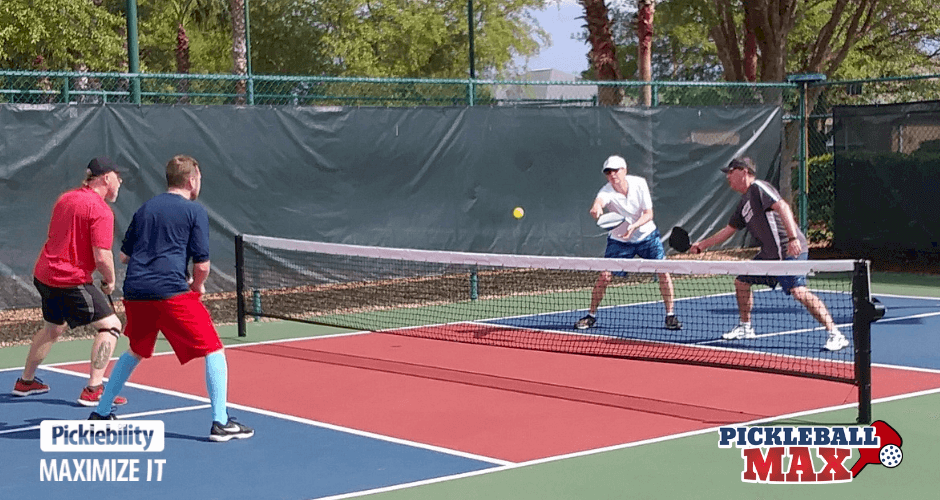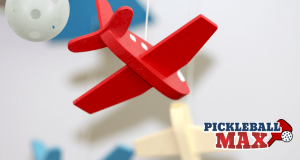Capturing the NVZ — Strategic Advance or Kamikaze Mission?
Throughout our pickleball journeys we have undoubtedly heard that points are more easily won when both partners are positioned at the NVZ line. Either instinctively — or from experience — we know that being positioned 7 feet from the net allows us to hit better angles and more easily attack the ball by hitting it downward at our opponents’ feet. Conversely, we understand the concept that, by positioning ourselves as close to the net as possible, it is more difficult for our opponents to hit the ball where we are most vulnerable (at our feet). Given the importance of positioning ourselves as close to the NVZ line as possible — ideally just an inch or two behind — how, and when, do we get from the baseline to the NVZ line during the point? Is it a strategic advance? Or Kamikaze mission?
Getting to the NVZ Line — Advantage Service Returners
For the team receiving the serve, getting to the NVZ line is simple. In fact, as a team you’re 50% of your way there before the ball is even struck. Afterall, the returner’s partner should already be parked in that ideal position as the serving team prepares to hit the serve.
From a strategic perspective, the player returning the serve should advance to the NVZ line immediately after the ball bounces and the return is made. Again, strategically, the return-of-serve should be one that is deep (the serving team will have to let the ball bounce) and with enough arc so as to give the returner sufficient time to get to the NVZ line where both partners are now ideally positioned and in control of the point.
The Serving Team (or any Team, for that Matter, that is Pinned to the Baseline while the Opponents are at the NVZ Line)
The team that is serving — or the team pinned to the baseline while the opponents are positioned at the NVZ line — has a significant disadvantage. It is, simply, much harder to win a point from farther back in the court. Strategically, the team pinned to the baseline desperately wants to get to the NVZ line where they will be on “equal footing” with the team already there. The drop shot (sometimes referred to as the 3rd shot drop) — hitting a soft ball over the net that lands in your opponent’s NVZ — is a great option to transition yourselves to the NVZ line. That soft drop shot will force your opponent to “hit up” on their next shot to get the ball over the net (by hitting up they will be unable to attack the shot) and it will also give you and your partner time to make your way to the NVZ line.

What if your Drop Shot Just Isn’t Good?
The drop shot is, undoubtedly, the most difficult shot to execute in pickleball. What if the drop shot is not executed properly? What if the ball is hit too high or too far beyond the NVZ line such that your opponents can aggressively swing downward, attack the ball and hit it in a spot where you are most vulnerable? If you and/or your partner are storming the NVZ line in this situation it’ll likely be a suicide mission — much like the Kamikaze pilots of the 1940’s. I would suggest this is a losing strategy.
If just one player storms the NVZ — while the other stays back — that is similarly, in most cases, a losing strategy. With one person at the NVZ line and one person at the baseline, you’ll — more often than not — still be at the mercy of your opponents who are both in the stronger position at the NVZ line. Your opponents can smack the ball hard to the person close at the NVZ line or much more easily hit it between the two players as angles are opened up.
So what’s the solution? It Depends.
The solution really depends on the quality of the play — and the trust you have in your partner. If you and your partner can execute an effective drop — say 80% of the time or more — I would encourage both partners to get to the NVZ immediately. Don’t even wait to see how well the drop is executed. However, if you’re like most club players and execute an effective drop shot at a much lower percentage, I highly recommend taking the “wait-and-see” approach.
Simply put, wait until you or your partner hit the shot. If the shot looks to be good, proceed forward… with caution. If the shot, on the other hand is not good, stay where you are and defend the best you can and wait for your next opportunity to drop the ball. It is much easier to defend slams and hard volleys deeper in the court than it would be if you had blindly stormed the NVZ.
Whatever you do, it’s imperative to move together as a team. Come up together. Stay back and defend together. And don’t go on a Kamikaze mission by yourself! See you on the courts!


